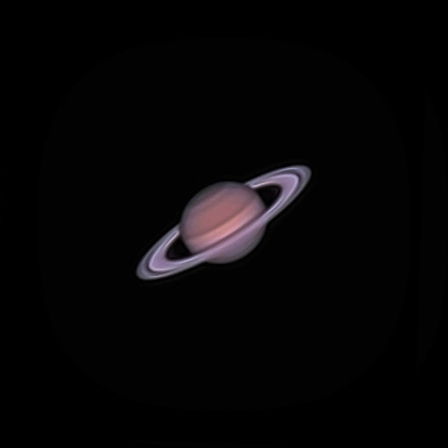
I don't think there’s a person on Earth who loves astronomy and would say, "Saturn doesn't intrigue me." In fact, almost everyone I know has Saturn as their favorite planet. What makes this planet so mesmerizing is its cosmic rings, which sparkle like a crown in the vastness of space. So, let's explore some fascinating facts about this celestial giant.
Galileo Galilei first glimpsed this gas giant through his telescope back in 1610 AD, forever changing our understanding of the cosmos. With an orbital radius of about 1,500,000,000 km, Saturn proudly holds its position as the sixth planet from the Sun. This distance means it takes more than 29.4 Earth years for Saturn to complete just one grand loop around the Sun! Yet, thanks to its rapid spin on its axis, one day on this massive planet lasts only 10.7 hours—a brief moment in cosmic time despite its colossal size!
With a volumetric mean radius of 58,232 km, Saturn is the second-largest planet in our solar system. It’s so immense that more than 700 Earths could fit inside it. However, despite its vastness, Saturn's mass is only 95 times that of Earth. This is due to its remarkably low density. Composed mostly of gases, Saturn has an average density of just 0.6873 g/cm³—less than water! Imagine if you could place this giant in a gigantic cosmic ocean; it would actually float. The atmosphere of this majestic planet is a swirling mix of 96.3% hydrogen, 3.25% helium, with traces of methane, ammonia, and other compounds. The average temperature on Saturn is a bone-chilling -170° Celsius, truly making it a world of extremes.
Now that we've delved into Saturn's structure and composition, let’s focus on its most breathtaking feature—the dazzling rings. Saturn stands as the crown jewel of the solar system, its rings a masterpiece of celestial art. These rings are the most extensive and complex in our solar system, comprising countless particles ranging from tiny micrometers to massive meters in size. There are four major groups of rings and three fainter, narrower groups, but even more rings circle this stunning planet. Composed primarily of ice particles, these rings also contain small amounts of rocky debris and dust, glistening like diamonds against the darkness of space.
Another captivating aspect of Saturn is its 146 named moons, 62 of which were only recently discovered in May 2023 by a team led by Edward Ashton, a postdoctoral fellow at the Academia Sinica Institute of Astronomy and Astrophysics. An additional 29 moons are still being studied. Many of these moons are incredibly small; 33 of them are less than 10 km in diameter, and 13 have diameters less than 50 km. Saturn's largest moon, Titan, is a world unto itself, being the second-largest moon in the Solar System after Jupiter's Ganymede.
The possibility of life on Titan has always been a topic of intense debate. Robert Zubrin, a renowned American aerospace engineer and author, once said, "In certain ways, Titan is the most hospitable extraterrestrial world within our solar system for human colonization." As we continue to unravel the mysteries of this mesmerizing planet and its moons, one can't help but wonder—what other secrets does Saturn hold, waiting to be discovered? Perhaps the key to humanity's future lies in these distant worlds. Well, I guess that's a topic for my next blog. Stay tuned, and keep exploring the wonders of the universe with me.

The image above was captured on 22nd August of 2022, a few days after the opposition of Saturn.
Equipment and process: Orion XT6 Plus Telescope and Oppo Reno5 to record a video of 2 minute duration @30fps. Planet recentered in PIPP, stacked 60% of the best frames in Autostakkert, further processed and sharpened in Registax6
Image Credit: SM Fardin Bin Mosabbbir